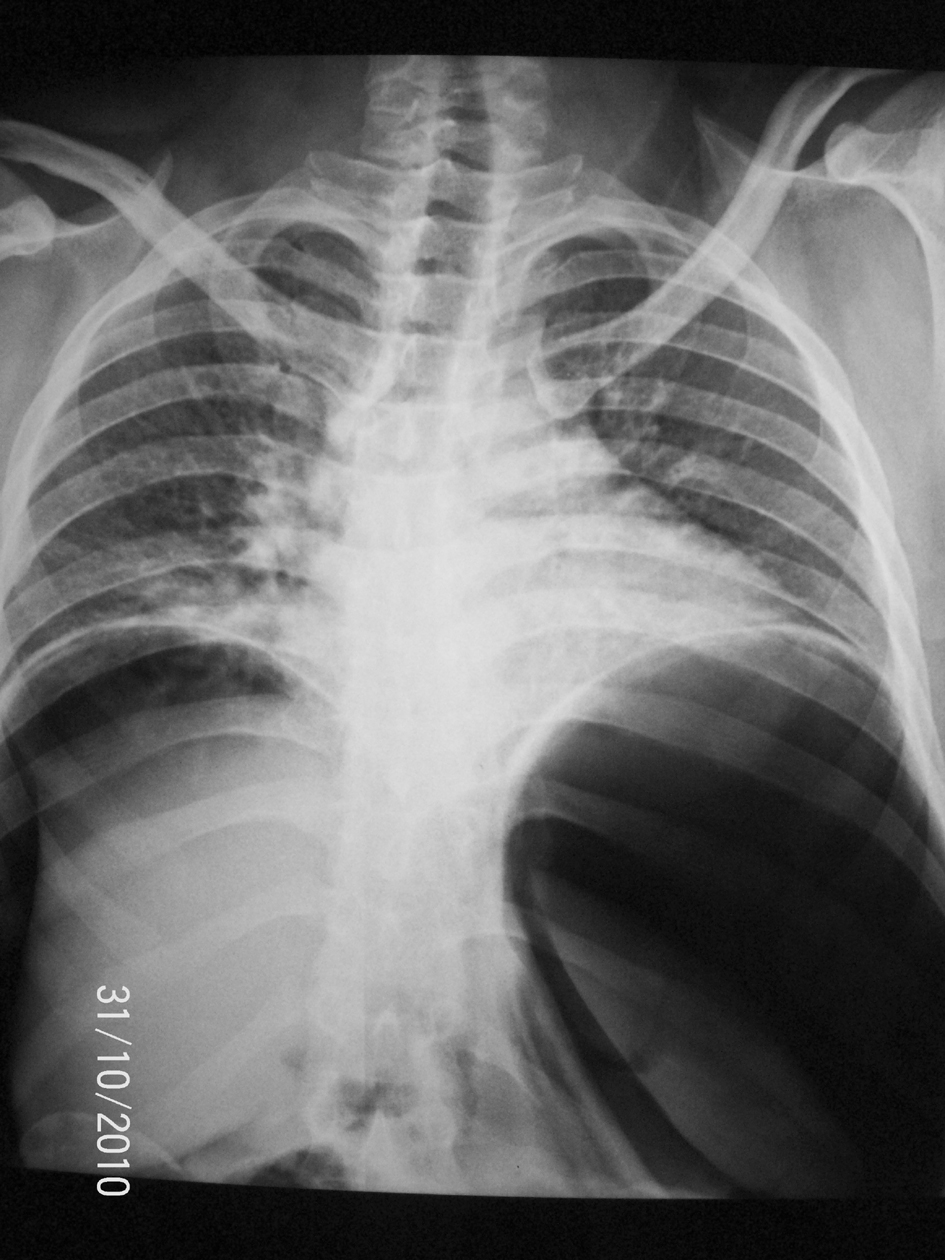| Journal of Medical Cases, ISSN 1923-4155 print, 1923-4163 online, Open Access |
| Article copyright, the authors; Journal compilation copyright, J Med Cases and Elmer Press Inc |
| Journal website http://www.journalmc.org |
Case Report
Volume 4, Number 3, March 2013, pages 159-160
A Rare Case of Colorectal Injury With Compressed Air
Mehmet Ergina, b, Muhammed Rasit Ozera, Sedat Kocaka, Nazli Karakusa, Betul Babagila, Basar Candera
aNecmettin Erbakan University, Meram Medicine Faculty Emergency Medicine Department, Turkey
bCorresponding author: Mehmet Ergin, Necmettin Erbakan Universitesi Meram Tıp Fakultesi Acil Tip AD, Meram, Konya, Turkey
Manuscript accepted for publication November 16, 2012
Short title: Compressed air related colorectal injury
doi: https://doi.org/10.4021/jmc997w
| Abstract | ▴Top |
Colorectal injures from implement on solid objects are infrequent but not rare. In the same category are injuries caused by non solid objects. Barotrauma from compressed air and liquid is less frequently encountered. In this report, you can read a case with colorectal injury after using air hose to dust off patient’s clothing. Although taking history sometimes is not possible due to factors related with patients’ condition, physical and radiological findings related with tension pneumoperitoneum can make physician diagnose injury and etiology.
Keywords: Colorectal injury; Compressed air; Pneumoperitoneum
| Introduction | ▴Top |
Colorectal injures from implement on solid objects are infrequent but not rare. In the same category are injuries caused by non-solid objects. Barotrauma from compressed air and liquid is less frequently encountered [1]. We are presenting a case of barotrauma to the colon from compressed air and discuss diagnosis, injury patterns and treatment of this type of injury.
| Case Report | ▴Top |
A 36-year-old man was admitted to ED due to his abdominal pain and distension after using air hose to dust off his clothing. His vital signs were in normal range and physical exam was normal except abdominal distension and signs of peritoneal inflammation. His chest and abdomen-X ray showed huge amount of pneumoperitoneum (Fig. 1). His intraoperative findings were free intraperitoneal air without free fluid and bowel contents, dilated colonic segments, multiple serosa injuries in all segments of colon but especially sigmoid colon and cecum. There was neither perforation finding in the colon nor any other abdominal organ injury. His follow-up period was completed without any complication and he was discharged in the 5th day after operation.
 Click for large image | Figure 1. Abdominal X ray showing free air in peritoneum. |
| Discussion | ▴Top |
Review of the literature reveals a similar case report in 1904 from a British surgeon in London [2]. Case analysis of pressurized-air injuries often reveal a misguided coworker and unwise behavior. Those cases not involving misbehavior usually occurred when employees used an air hose to dust off their clothing as likewise in our case. It is important to realize that this injury can occur without inserting the air hose into the anus [1, 2]. In several cases reported in the literature, the air hose was “fired” through clothes at a distance from the anus [1-4].
Although the air pressure can vary in different situations, it takes only 1 or 2 seconds to deliver enough pressurized air to cause major damage. The rupture usually occurs in a longitudinal direction along the muscle fibers with full thickness perforation or with stripping of the serosa and muscularis. The most common injury location is the anti-mesenteric surface of the sigmoid colon [1]. Some patients may withhold information, trying to protect the guilty party or due to embarrassment. In such cases, the general symptoms are abdominal pain, abdominal distension, rectorrhagia, tachycardia, tachypnoea. Tension pneumoperitoneum is a characteristic presentation [1, 5, 6]. Death can depend on acute air embolism, acute fat embolism, acute respiratory insufficiency due to enhanced intra-abdominal pressure and chest compression, acute heart failure due to insufficient preload and peritoneal shock [5].
Percutaneous decompression of the tension pneumoperitoneum can be accomplished by inserting a cannula or a Veress needle into the abdomen for relief of the pressure [7]. Sixteen-gauge angiocath was inserted percutaneously in the right upper quadrant of the abdomen for decompression with alleviation of respiratory and hemodynamic problems [8]. The overall mortality of pneumatic rupture of the bowel was 65%. If the acute shock was not immediately fatal, the survival was depending from further treatment. Surgery reduced mortality to 42% [9].
Conclusion
Compressed air related colorectal injuries are rare conditions admitted to emergency departments. Although taking history sometimes is not possible due to factors related with patients’ condition, physical and radiological findings related with tension pneumoperitoneum can make physician diagnose injury and etiology.
| References | ▴Top |
- Zunzunegui RG, Werner AM, Gamblin TC, Stephens JL, Ashley DW. Colorectal blowout from compressed air: case report. J Trauma. 2002;52(4):793-795.
doi pubmed - Stone GW. Rupture of the bowel caused by compressed air. Lancet. 1904;2:216.
doi - Andrews EW. Pneumatic rupture of the intestine: a new type of industrial accident surgery. Gynecol Obstet. 1911;12:63–64.
- Suh HH, Kim YJ, Kim SK. Colorectal injury by compressed air—a report of 2 cases. J Korean Med Sci. 1996;11(2):179-182.
pubmed - Weber M, Kolbus F, Dressler J, Lessig R. Survived ileocecal blowout from compressed air. Int J Legal Med. 2011;125(2):283-287.
doi pubmed - Avallone S, La Torre M, Meurette G. Rectal injury by compressed air. J Trauma. 2010;68(1):248.
doi pubmed - Millar DM. Tension pneumoperitoneum: a simple solution. Br J Hosp Med. 1988;40(2):149.
pubmed - Chan SY, Kirsch CM, Jensen WA, Sherck J. Tension pneumoperitoneum. West J Med. 1996;165(1-2):61-64.
pubmed - Brown RK, Dwinelle JH. Rupture of the Colon by Compressed Air: Report of Three Cases. Ann Surg. 1942;115(1):13-20.
doi
This is an open-access article distributed under the terms of the Creative Commons Attribution License, which permits unrestricted use, distribution, and reproduction in any medium, provided the original work is properly cited.
Journal of Medical Cases is published by Elmer Press Inc.








